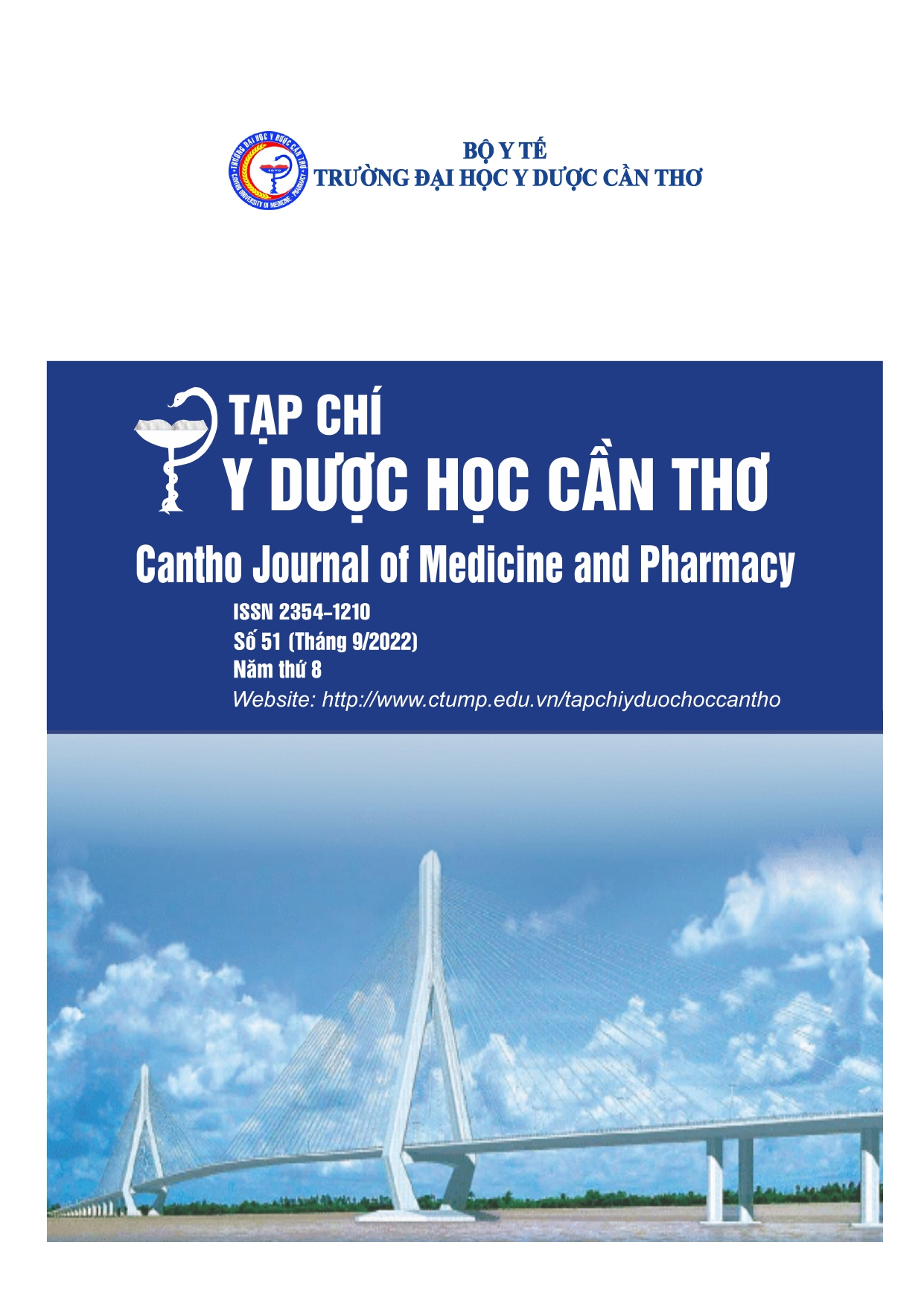EVALUATION OF THE ANTIBACTERIAL ACTIVITIES OF SEED PEEL AND SEED KERNEL EXTRACTS FROM MANGO (MANGIFERA INDICA L.).
Main Article Content
Abstract
Background: Mango (Mangifera Indica L.) is one of the long-researched medicinal herbs with hypoglycemic, antioxidant, anti-inflammatory effects along with many clinically proven nutritional components. However, mango seeds have received little research attention and there have been no studies on the pharmacological effects of mango seeds grown in Vietnam. Objective: To investigate the antibacterial activity of the kernels and peels of Mango (Mangifera Indica L.). Materials and methods: Determination of antibacterial activity of mango seed extract and kernel on Propionibacterium acnes, Staphylococcus aureus and Escherichia coli bacteria by agar diffusion method and MIC by agar dilution method. Results: At a concentration of 200mg/mL, the extracts of mango seed peel and mango kernel were both antibacterial against Propionibacterium acnes, Staphylococcus aureus bacteria with aseptic ring size of 23.7mm; 15.0mm respectively for mango kernel and 19.6mm; 12.0mm for mango seed peel, especially for E. coli bacteria, mango seed peel is not able to inhibit, but get 17.0mm for mango kernel. The antibacterial ability of mango kernel extract was almost higher than that of mango seed peel extract on 3 types of bacteria tested. The MIC values of both extracts on S. aureus and E. coli were >5mg/mL. However, for P. acnes, mango kernel extract was more sensitive to mango seed peel extract (5 mg/mL), with a MIC value of 1.25mg/mL. Conclusions: Extracts of mango seed peel and kernel are effective against bacteria Staphylococcus Aureus and Propionibacterium Acnes. However, the antibacterial ability on Escherichia coli was only found on mango kernel extract. This study contributes to the experimental basis of the antibacterial effect of the extract of the peel and kernel of the mango seed.
Article Details
Keywords
Mangifera Indica L, antibacterial, Mango seed, Propionibacterium acnes, Staphylococcus aureus, Escherichia coli
References
2. Nguyễn Thị Ái Lan, Lư Thị Lan Thanh, Ninh Khắc Huyền Trân, Đái Thị Xuân Trang, “Hiệu quả hạ glucose huyết của cao chiết lá xoài non (Mangifera indica L.) trên chuột bệnh đái tháo đường”, Hội nghị khoa học toàn quốc về sinh thái và tài nghiên sinh vật lần thứ 7, tr.1290-1295.
3. Lê Huyền Trâm, Nguyễn Văn Thông; Huyền, Đoàn Thị Thu (2020), “Nghiên cứu phân lập hợp chất mangiferin từ lá cây xoài”, Tạp chí Khoa học và Công nghệ 140, tr.61-64.
4. A.C. Martin, A.D. Pawlus, E.M. Jewett, D.L. Wyse and C.K. Angerhofer, A.D. Hegeman (2014), “Evaluating solvent extraction systems using metabolomics approaches”, RSC Advances, vol. 4, no. 50, pp.26325-26334.
5. Amgad A. Awad El-Gied1, Martin R. P. Joseph2, Ismail M. Mahmoud1 et al. (2012), “Antimicrobial Activities of Seed Extracts of Mango (Mangifera indica L.)”, Advances in Microbiology, 2, pp.571-576.
6. B. C. S. S. N. Pellegrini, G. G. D. D. R. O. V. Brenna, R. B. M. Bianchi and F. Brighenti (2007), “Evaluation of antioxidant capacity of some fruit and vegetable foods: efficiency of extraction of a sequence of solvents”, J. Sci. Food Agric, vol. 87, pp.103-111.
7. M. Pitchaon (2011), “Antioxidant capacity of extracts and fractions from mango (Mangifera indica L.) seed kernels”, International Food Research Journal 18, pp. 523-528.
8. T.M. Rababah, F. Banat, A. Rababah, K. Ereifej, W. Yang (2010), “Optimization of extraction conditions of total phenolics, antioxidant activities, and anthocyanin of oregano, thyme, terebinth, and pomegranate”, J. Food Sci., Vols. 75, no. 7, pp.C626-C632.
9. Worapan Poomanee et al. (2018), “Antimicrobial susceptibility of anaerobic bacteria In-vitro investigation of anti-acne properties of Mangifera indica L. kernel extract and its mechanism of action against Propionibacterium acnes”, Anaeroba, vol. 52, pp.64-74.


